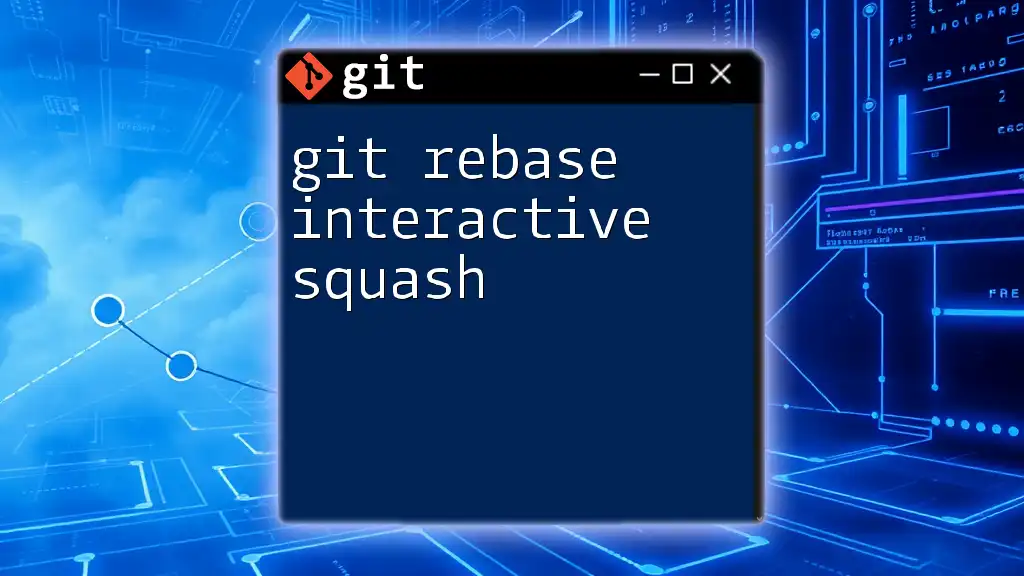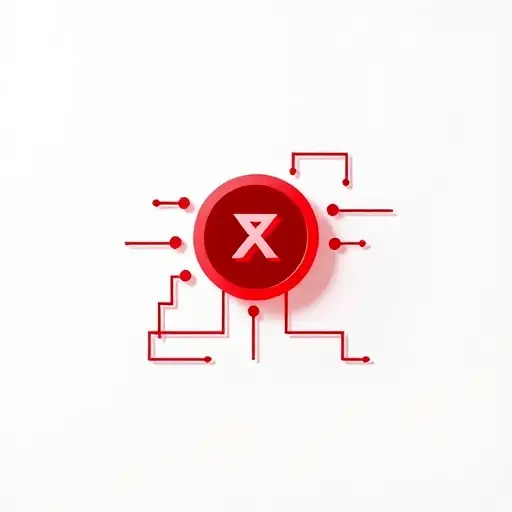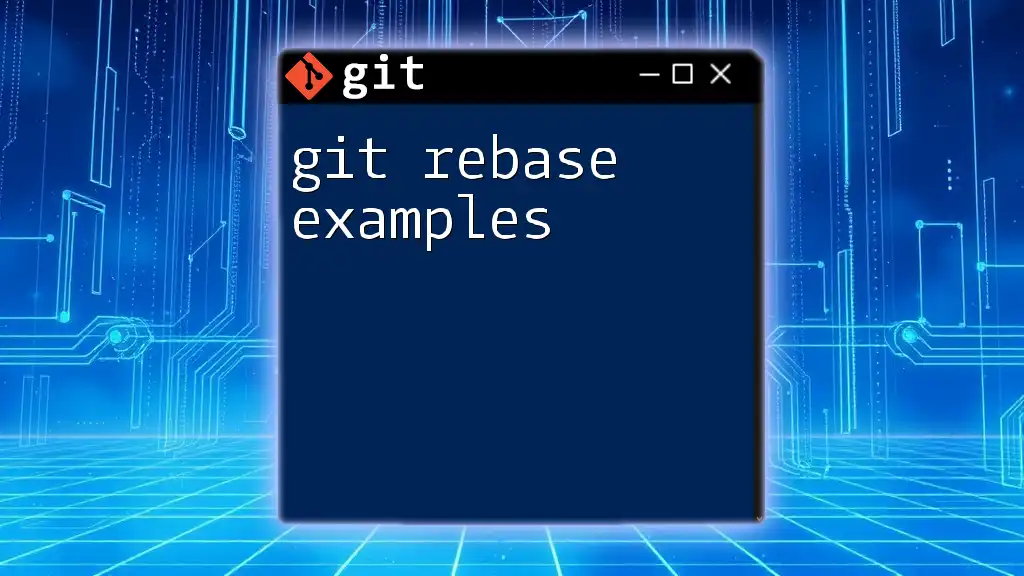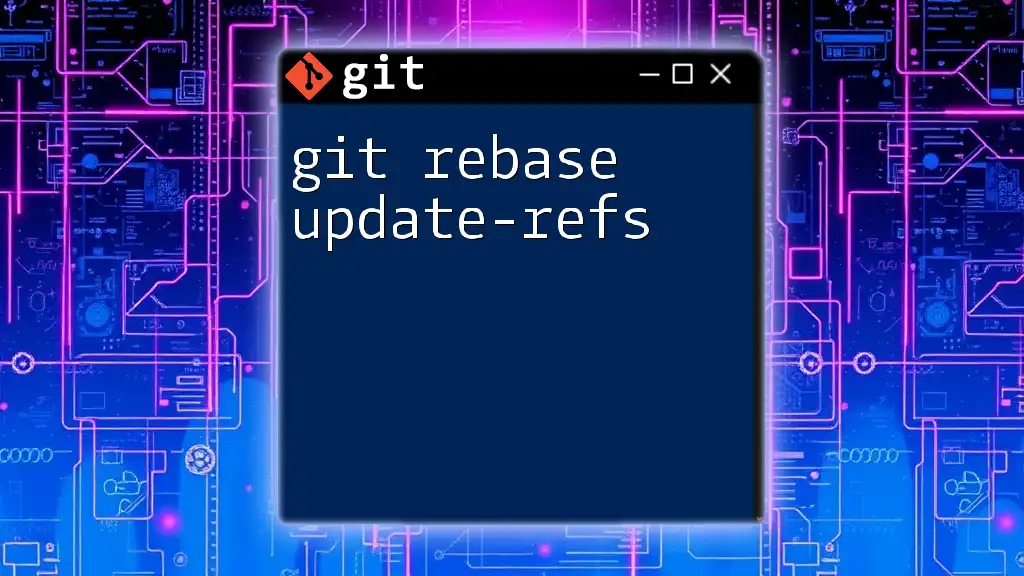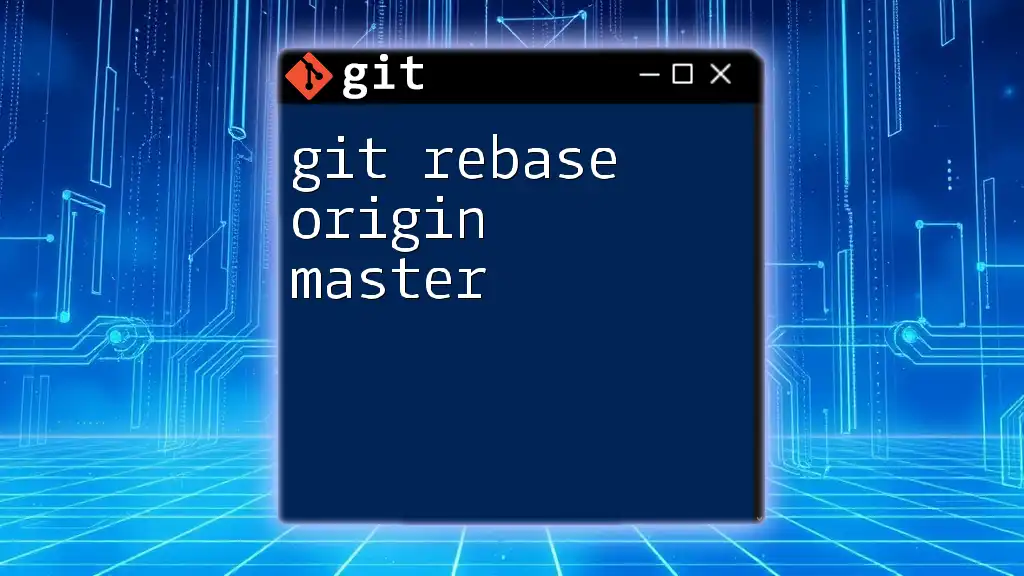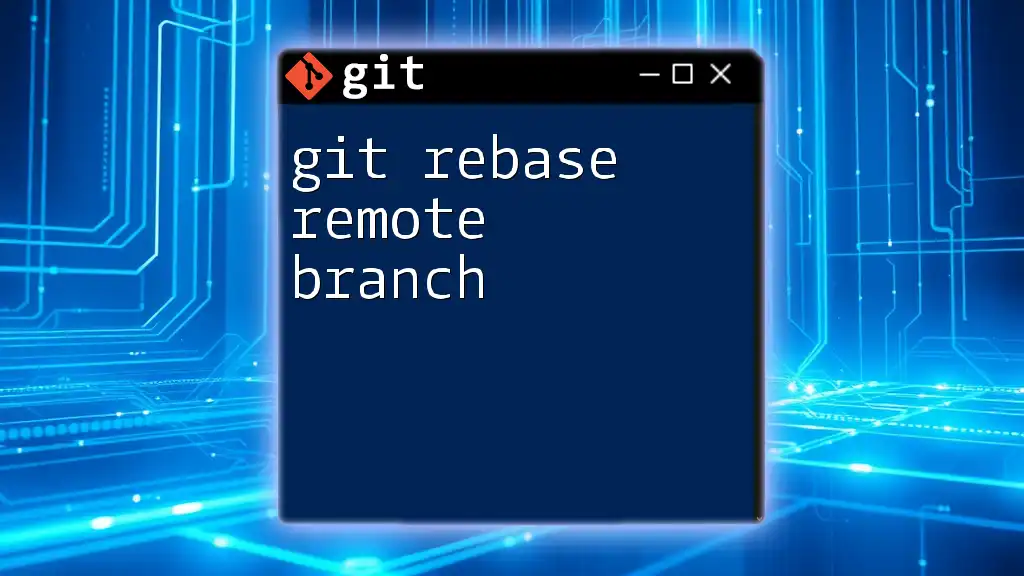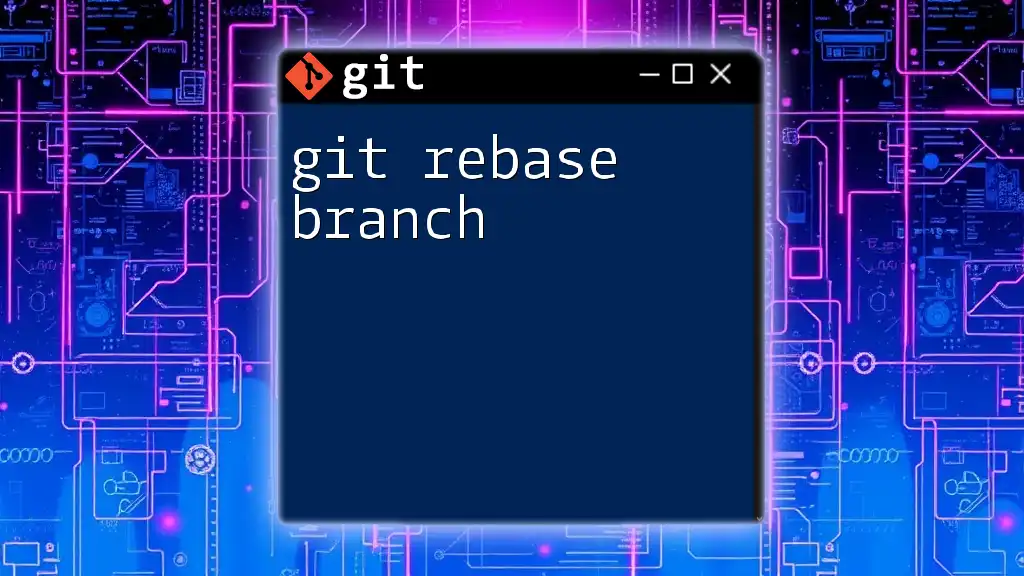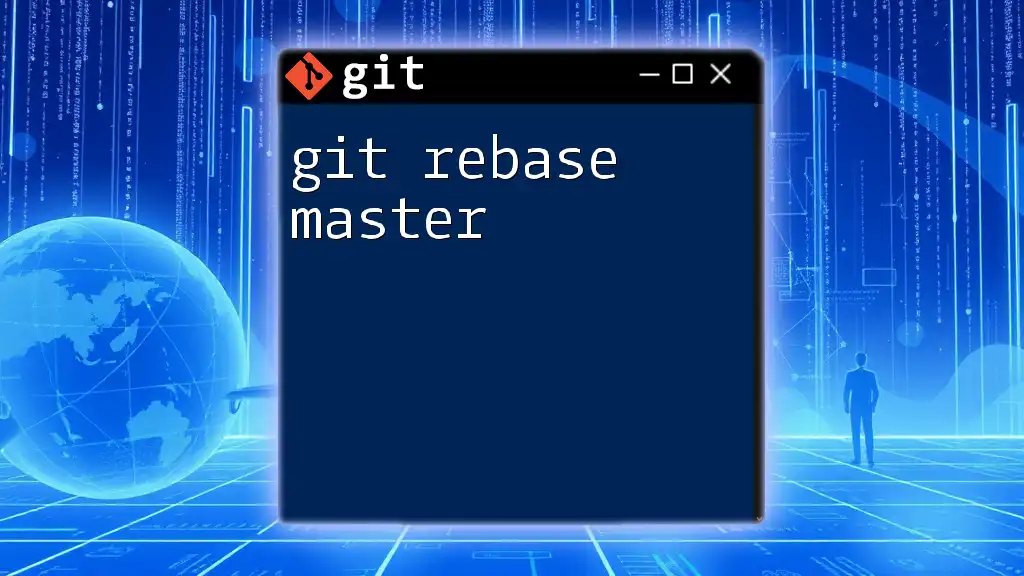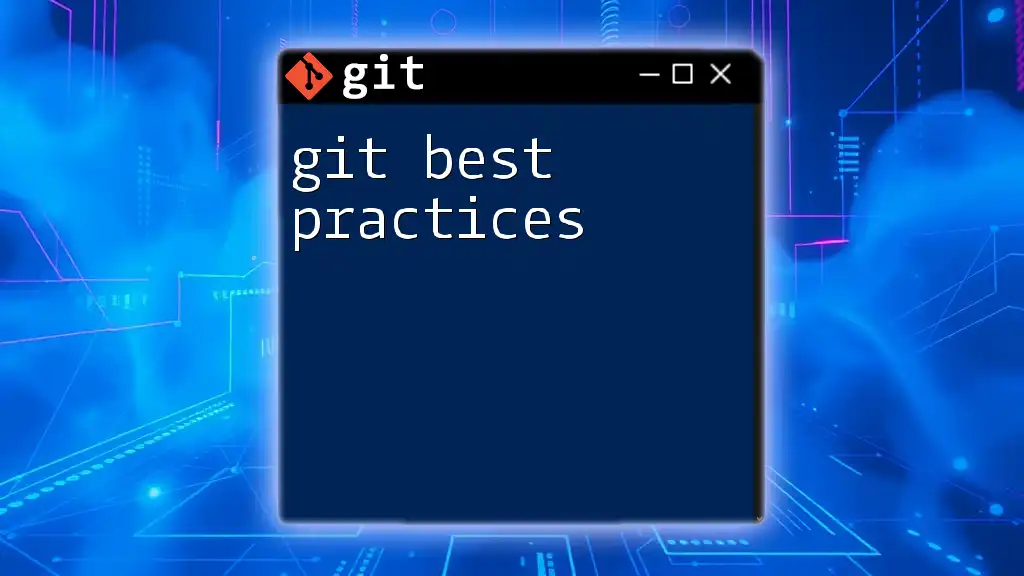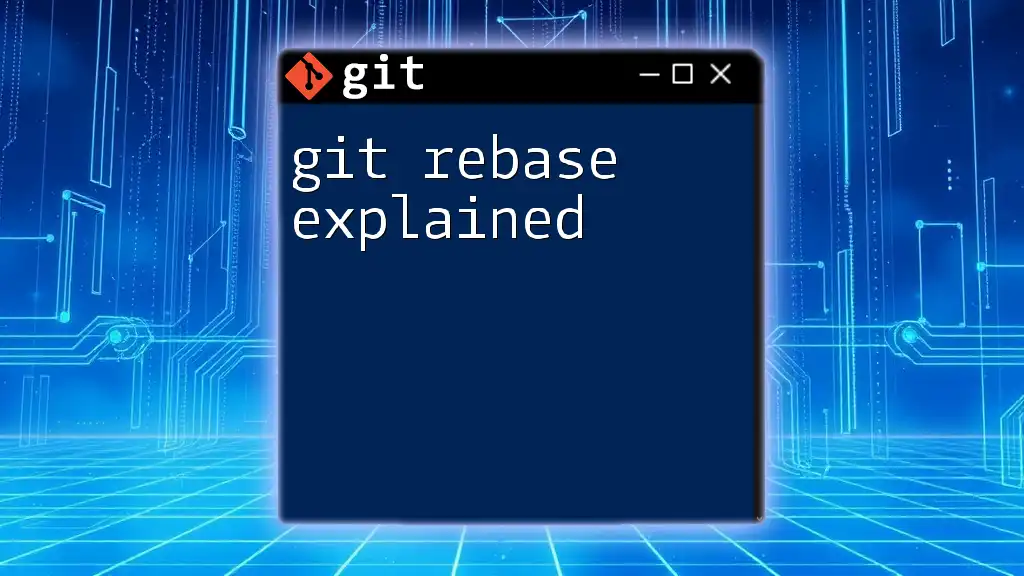"Git rebase interactive squash allows you to combine multiple commits into a single, more meaningful commit within your branch's history for cleaner project management."
Here’s a code snippet to illustrate the process:
git rebase -i HEAD~3
In the interactive interface that appears, replace the word 'pick' with 'squash' (or 's') for the commits you wish to combine, keeping 'pick' for the first commit you want to keep.
Understanding Git Rebase
What is Git Rebase?
Git rebase is a command that allows you to integrate changes from one branch into another by “replaying” commits. Unlike merging, which takes the content of a source branch and integrates it with the target branch, rebase works by moving the entire base of a branch to a new point in the commit history. This results in a cleaner project history as it avoids any merge commits.
When to Use Rebase
Rebasing is particularly useful when you want to maintain a linear commit history. This is crucial for projects with multiple contributors where messy histories can complicate collaboration. It’s ideal when you want to:
- Incorporate changes from the main branch into your feature branch without creating a merge commit.
- Prepare a feature branch for merging back into the main branch and ensure that all the changes are updated and conflict-free.
Advantages of Using Rebase Over Merging
With rebase, the commit history appears as a straight line, making it easier to navigate through commits. When you use rebase, you cherry-pick the desired changes and apply them so that they look like they were made sequentially rather than alongside other developments. This clarity and organization make it easier for everyone involved to understand the project’s progression.
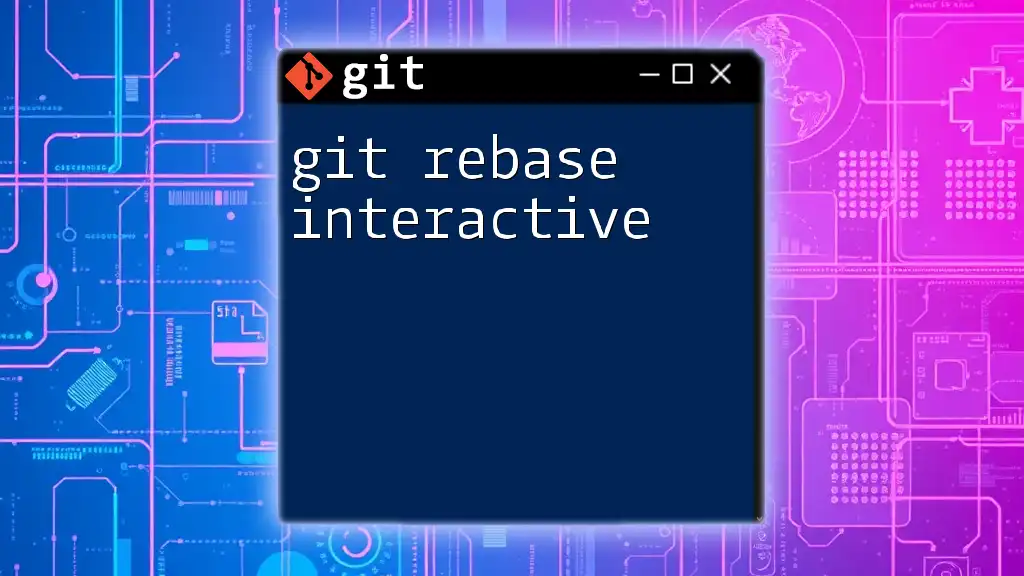
Interactive Rebase Overview
What is Interactive Rebase?
Interactive rebase allows you to control how commits are handled when rebasing. You can edit, squash, or reorder commits during an interactive rebase, giving you the flexibility needed to manage your commit history effectively.
Why Use Interactive Rebase?
The primary benefit of interactive rebase is that it allows you to squash multiple commits into a single one, which helps to keep the project history clean and more understandable. This is particularly useful before merging a feature branch, as it helps in consolidating different iterations of work into a single, coherent message.

Squashing Commits with Interactive Rebase
What is Squashing?
Squashing is the process of combining multiple commits into one. This is particularly useful when you have several small commits that make up a larger feature, allowing you to present a more meaningful and succinct commit history. Benefits of squashing include:
- Increased clarity in the commit history
- Easier troubleshooting and debugging
- A simpler history for future reference
How to Start an Interactive Rebase
Preparing Your Environment: Before you start, ensure your branch is updated with the latest changes. You can check your current commit history with:
git log
Initiating the Interactive Rebase: To start an interactive rebase, use the following command:
git rebase -i HEAD~n
Here, replace `n` with the number of commits you want to include in the rebase.
The Interactive Rebase Interface
Understanding the Rebase Options
When you initiate the interactive rebase, your default text editor opens, showing a list of commits. Each line begins with the word ‘pick’, which tells Git to use that commit as is. You can change ‘pick’ to ‘squash’ (or ‘s’) for commits you want to combine with previous ones.
For instance, the interface might look like this:
pick 1234abcd Commit message 1
squash 5678efgh Commit message 2
squash 9101ijkl Commit message 3
Here, the first commit message remains intact, while the second and third are squashed into it.
Editing the Commit List
Carefully edit the commit list for clarity and meaning. Each entry influences what the resulting commit history will look like. A well-planned flattening of commits can greatly improve readability.
Finalizing the Squashed Commits
Saving Changes
Once you have rearranged or modified the commit list, save the changes in the text editor. This will start the squashing process.
Writing a New Commit Message
Following the squashing, you will have an opportunity to consolidate the commit messages. A clear commit message post-squashing simplifies tracking changes. Consider using a structure like this:
[Type] Summary of significant changes
- Detailing important feature updates
- Noting fixes or improvements
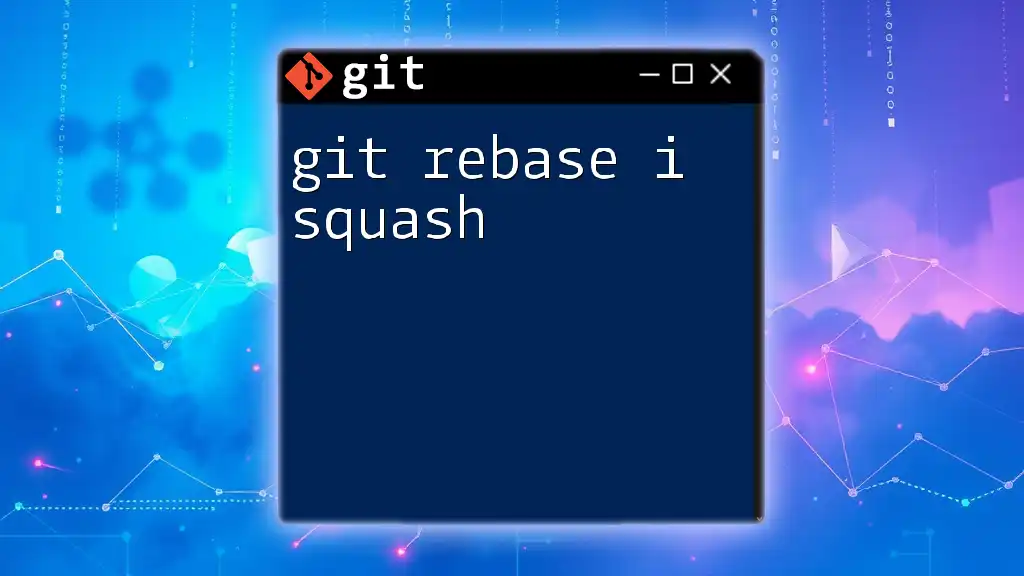
Working Through Common Issues
Handling Conflicts During Rebase
Conflicts can occur during rebase if there are changes in the commits that overlap with changes in the base branch. When this happens, Git will pause the rebase and prompt you to resolve the conflicts. Always review the conflicting files carefully before proceeding.
Aborting a Rebase
If you find yourself stuck or if the rebase doesn't go as planned, you can safely abort it by using:
git rebase --abort
This command will revert your branch back to the state it was in before the rebase began.
Continuing After Resolving Conflicts
After resolving any conflicts, you can continue the rebasing process with:
git rebase --continue
Make sure that all conflicts are resolved before executing this command.
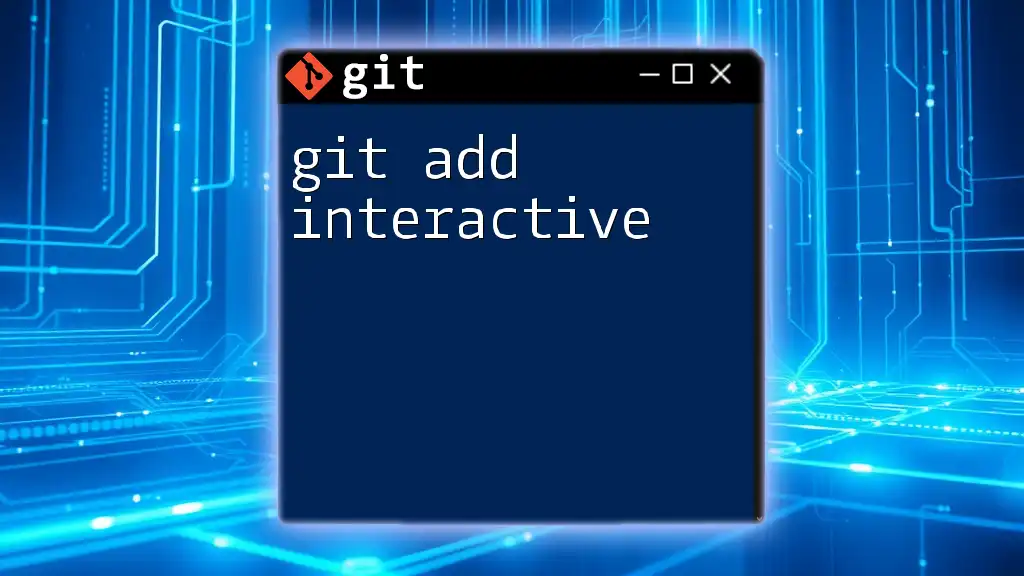
Best Practices for Using Interactive Rebase
Keeping Commits Meaningful
When squashing commits, it’s essential to maintain descriptive commit messages that accurately reflect the changes made. This practice not only benefits you but also aids fellow developers trying to understand your work later on.
Avoiding Rebase on Public Branches
Be cautious: rebasing should generally be avoided on public branches that others might have already pulled. Rebasing rewrites commit history, which can complicate and confuse collaborators.
Regularly Cleaning Commit History
Regularly using interactive rebase can help maintain a clean commit history. Encourage team members to adopt good practices for squashing commits, as a tidy history can greatly facilitate future development and debugging efforts.
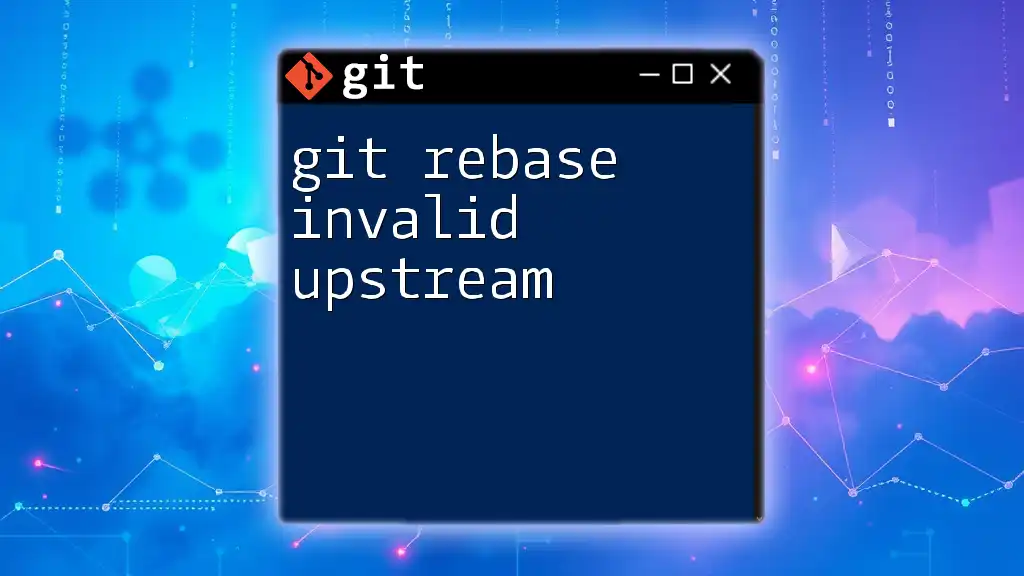
Conclusion
Recap of Key Points
In summary, git rebase interactive squash is an essential tool for managing your commit history. By understanding how to effectively use interactive rebase and squash commits, you enhance project clarity and organization.
Encouragement for Further Practice
Practice makes perfect! Try using git rebase in your projects to enhance your skills. Engage with various tutorials or resources to further learn about Git and its commands.
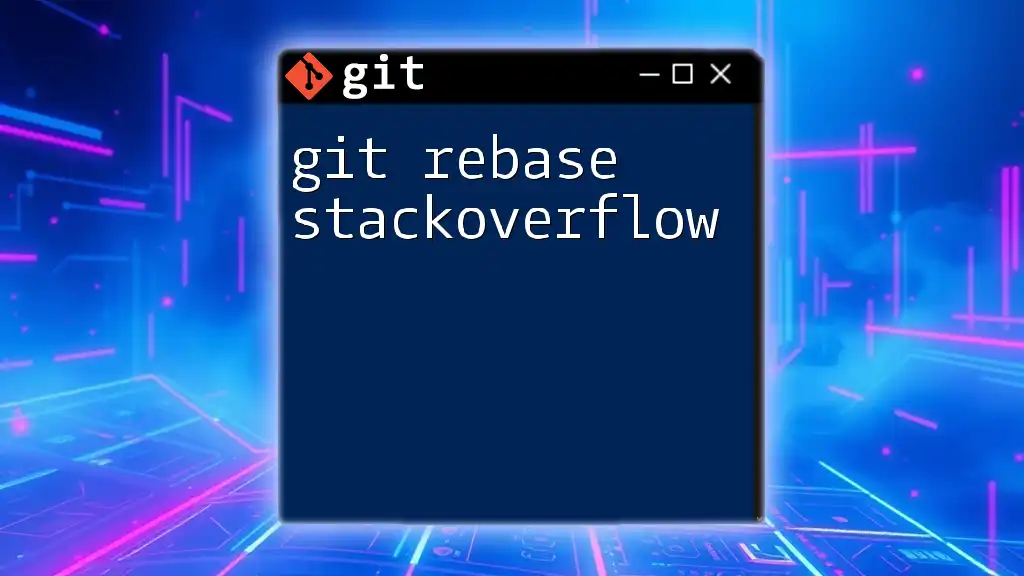
Additional Resources
For further reading on Git operations, be sure to check the official Git documentation. Additionally, using visualization tools for commit history can provide excellent insights into your project's development.
FAQ Section
You may encounter common questions regarding git rebase and squash. Address any misunderstandings as needed to build your expertise around these powerful features.

